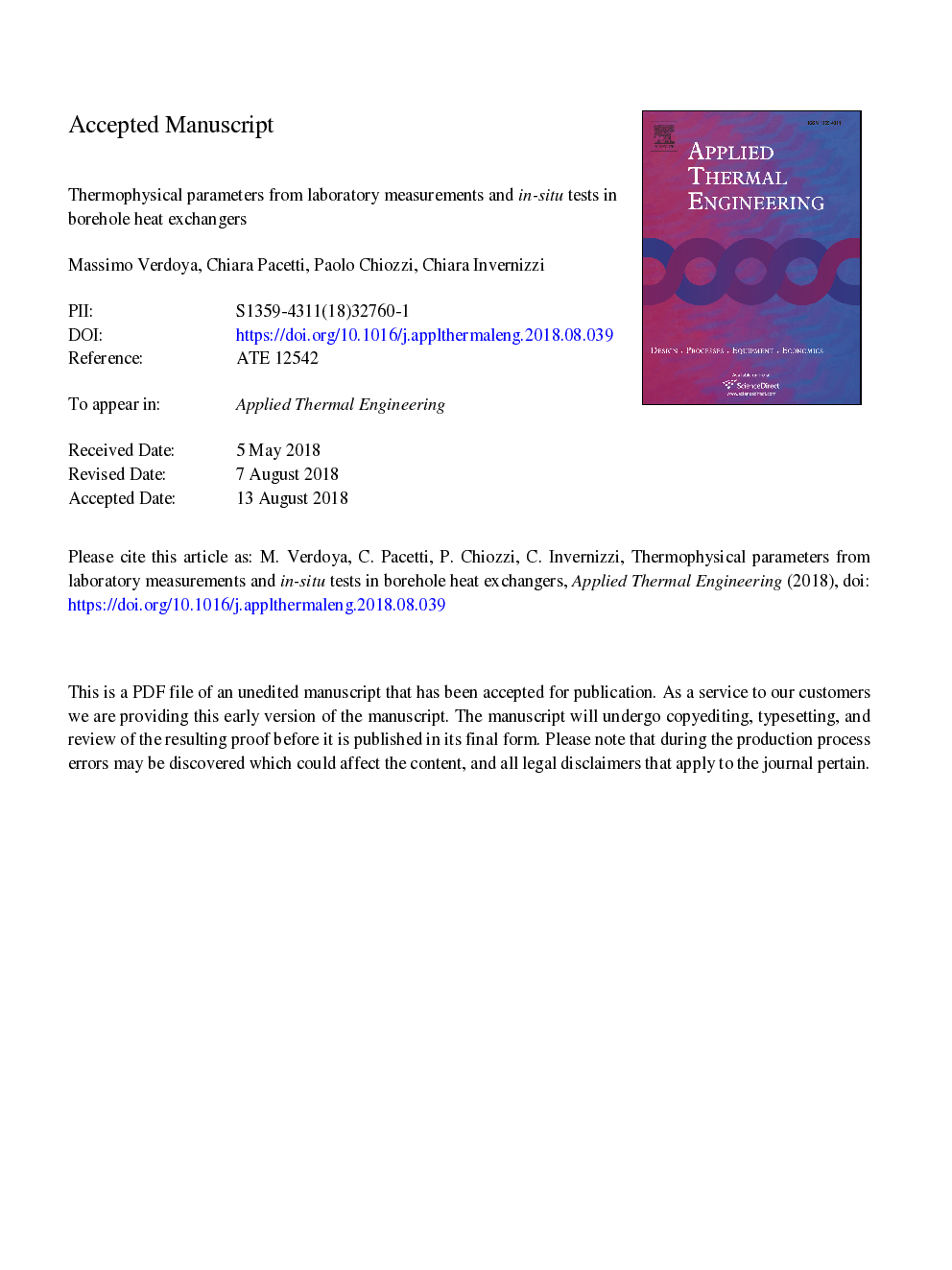| کد مقاله | کد نشریه | سال انتشار | مقاله انگلیسی | نسخه تمام متن |
|---|---|---|---|---|
| 10127326 | 1645050 | 2018 | 26 صفحه PDF | دانلود رایگان |
عنوان انگلیسی مقاله ISI
Thermophysical parameters from laboratory measurements and in-situ tests in borehole heat exchangers
ترجمه فارسی عنوان
پارامترهای ترموفیزیکی از اندازه گیری های آزمایشگاهی و آزمایش های داخل محفظه های تبخیری گمانه
دانلود مقاله + سفارش ترجمه
دانلود مقاله ISI انگلیسی
رایگان برای ایرانیان
کلمات کلیدی
هدایت حرارتی، مقاومت در برابر حفره چاه، مبدل حرارتی گمانه آزمون پاسخ حرارتی، بهبود حرارتی،
موضوعات مرتبط
مهندسی و علوم پایه
مهندسی شیمی
جریان سیال و فرایندهای انتقال
چکیده انگلیسی
Laboratory and in-situ tests were carried out with the aim of investigating underground thermal properties and mechanisms of heat transfer of a pilot ground-source heat pump system consisting of two borehole heat exchangers. Samples of grouts used for filling the boreholes and of the main lithotypes penetrated by drilling were analysed in the lab for assessing their thermal properties. Grouts with different mechanical characteristics and similar mineral composition were used in the two holes. The grout thermal conductivity ranged from 1.65 to 2.13â¯Wâ¯mâ1â¯Kâ1 and thermal diffusivity from 0.61 to 0.80â¯Î¼m2â¯sâ1. Thermophysical measurements on the lithotypes showed the largest thermal conductivity (2.66â¯Wâ¯mâ1â¯Kâ1) in sandstones, whereas pelite denoted the lowest value (1.82â¯Wâ¯mâ1â¯Kâ1). The average thermal diffusivity was 0.73â¯Î¼m2â¯sâ1. The in-situ experiments included thermal logs, to evaluate the undisturbed underground temperature, and thermal response tests, which were interpreted with the moving line-source model to infer the underground thermal conductivity, the borehole thermal resistance and the groundwater velocity. The inferred thermal conductivity varied from 2.09 to 2.48â¯Wâ¯mâ1â¯Kâ1 and thermal resistance from 0.188 to 0.193â¯mâ¯Kâ1â¯Wâ1. Values of Darcy velocity ranged from 5 to 9â¯Ãâ¯10â7â¯mâ¯sâ1. After the heat injection tests, the temperature variation with time was recorded at 20-m-depth intervals in both holes. The temperature-time series were used to assess the thermal conductivity variation with depth. In both boreholes, thermal conductivity was little variable from 20 to 80â¯m depth (2.14-2.34â¯Wâ¯mâ1â¯Kâ1) and it increased (2.49-2.68â¯Wâ¯mâ1â¯Kâ1) at the hole bottom. The average thermal conductivity for the two boreholes was quite similar (2.29-2.32â¯Wâ¯mâ1â¯Kâ1) and consistent with the values obtained with the moving line-source model. The results obtained with this approach were also consistent with the laboratory measurements and gave estimates of thermal conductivity at different depths.
ناشر
Database: Elsevier - ScienceDirect (ساینس دایرکت)
Journal: Applied Thermal Engineering - Volume 144, 5 November 2018, Pages 711-720
Journal: Applied Thermal Engineering - Volume 144, 5 November 2018, Pages 711-720
نویسندگان
Massimo Verdoya, Chiara Pacetti, Paolo Chiozzi, Chiara Invernizzi,
